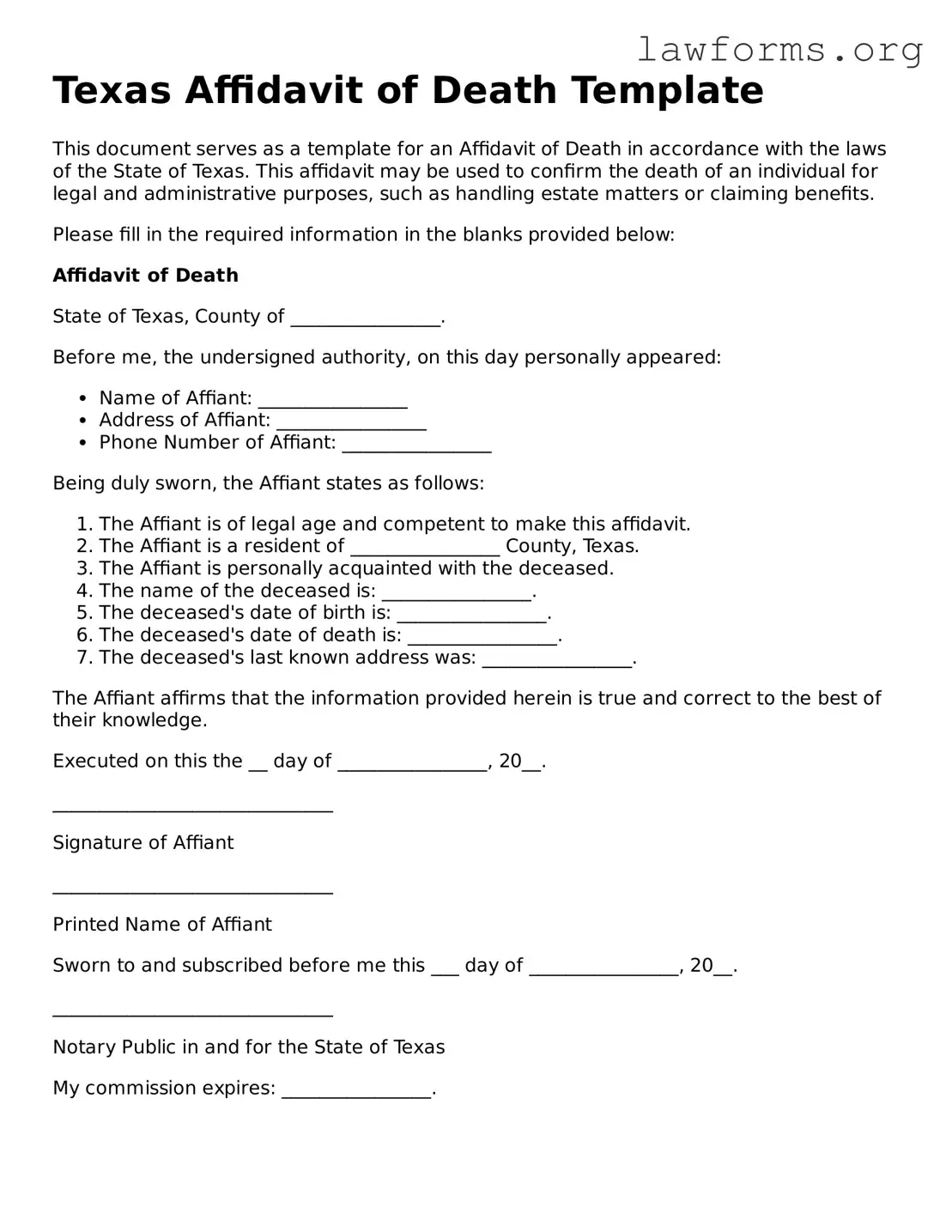Texas Affidavit of Death Template
This document serves as a template for an Affidavit of Death in accordance with the laws of the State of Texas. This affidavit may be used to confirm the death of an individual for legal and administrative purposes, such as handling estate matters or claiming benefits.
Please fill in the required information in the blanks provided below:
Affidavit of Death
State of Texas, County of ________________.
Before me, the undersigned authority, on this day personally appeared:
- Name of Affiant: ________________
- Address of Affiant: ________________
- Phone Number of Affiant: ________________
Being duly sworn, the Affiant states as follows:
- The Affiant is of legal age and competent to make this affidavit.
- The Affiant is a resident of ________________ County, Texas.
- The Affiant is personally acquainted with the deceased.
- The name of the deceased is: ________________.
- The deceased's date of birth is: ________________.
- The deceased's date of death is: ________________.
- The deceased's last known address was: ________________.
The Affiant affirms that the information provided herein is true and correct to the best of their knowledge.
Executed on this the __ day of ________________, 20__.
______________________________
Signature of Affiant
______________________________
Printed Name of Affiant
Sworn to and subscribed before me this ___ day of ________________, 20__.
______________________________
Notary Public in and for the State of Texas
My commission expires: ________________.
